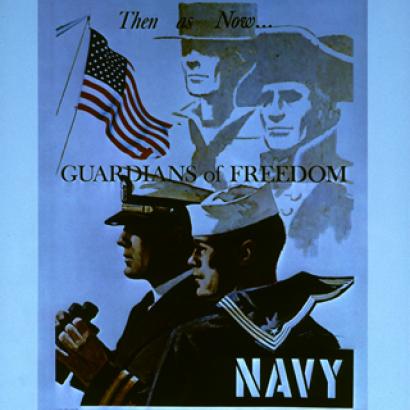- Security & Defense
- US Defense
- International Affairs
- US Foreign Policy
- History
- Military

Last year, within two weeks’ time, two deadly collisions of U.S. Navy ships in western Pacific sea-lanes brought home the reality of a Navy in increasing demand yet stretched precariously thin. The captains and those responsible on watch those nights, as they operated in congested Asian waters, were held to account, but it remains the nation that has allowed and accepted the conditions that led to those tragic events and the loss of 17 sailors. As articulated in a review of those incidents that I co-led, it has been a long road to the current level of reduced readiness, and it will not be turned around quickly.
In Strategika #31 (April 2016), I addressed the implications of lack of capacity, the numbers of things that contribute to military power. Sadly, the shrinking number of ships in the U.S. fleet led to the pace of operations and the compromises made to meet the growing operational demands. Those demands will continue to be made as the Navy grapples with meeting our global security obligations. Over the past 25 years the number of ships in our Navy decreased by nearly half. Although the fleet is significantly smaller, the expectation remains for the Navy to be present in areas of strategic importance, to project power when prompt, assured access to land bases is problematic, and to persistently defend our interests and those of our allies and partners. Today, that means twice the percentage of the fleet is deployed than was at the height of the Cold War.
The recently issued National Security Strategy correctly identifies the challenges posed by China and Russia and the importance of trade to our economic security. Throughout history great power competition and the trade that enables prosperity both played out on the world’s oceans. Past is prologue and, as the Security Strategy correctly asserts, nowhere will this be more pronounced nor more consequential than on the sea-lanes and in the vast reaches of the Indo-Pacific region. China gets it, and has blended its economic and security ambitions and strategies. It intends to influence events and outcomes, is following the approach of previous maritime powers, and is investing in appropriate maritime capabilities and, most importantly, the capacity to succeed. Its navy is growing in numbers and sophistication and it has thoughtfully and quietly created a network of port access to enable distant, longer duration operations in the Indo-Pacific. It is beginning to be contrasted to a diminished U.S. naval presence or perceptions of lack of credible U.S. naval power in that important region. For years China’s rising military posture was something that would have to be dealt with in the “out years.” Now the “out years” have arrived.
The clarity of the National Security Strategy and the associated intent to substantially increase the size of the Navy are welcome acknowledgements of our geopolitical challenge, but what is said and what is done are different things. If Congress does not resolve the fiscal disconnects between the nation’s strategy and what is needed to achieve its ends, the new strategy will ring hollow. Increasing the size of the Navy and investing in the readiness of the current fleet until new ships and aircraft arrive require predictable, sustained investment. In this case, recent past cannot be prologue. Since the Budget Control Act was passed in 2011, the Navy has accumulated a $102 billion shortfall between enacted base budgets and needs projected in 2012. Congress has exacerbated that divot by failing to pass budgets in a timely matter, and then defaulting to continuing resolutions to bridge the gap. The consequence is the Navy (and all the services) not having the funds needed in the right appropriation at the right time and, because of constraints in the rules governing continuing resolutions, not having the flexibility to align those funds where needed. In a dynamic force that operates and responds globally, the impacts are immediate and the consequences protracted. It would be less impactful if continuing resolutions were rare, but Congress, constitutionally charged with maintaining a Navy, has dealt the Department of Defense continuing resolutions for 33 of the last 42 years.
Although pressed and stretched, our Navy remains the most capable in the world. But the margin is shrinking. Our young sailors who go forward on the sea are extraordinary men and women who, again, face a rising naval challenge and peer competitor in the Indo-Pacific. Stretched as they are, they will still be at sea, on watch in the vital sea-lanes of the region. Will those charged to “maintain a Navy” provide the means for them to do their job as they see the need and the privilege to do it?















